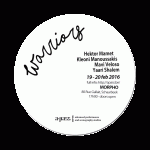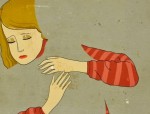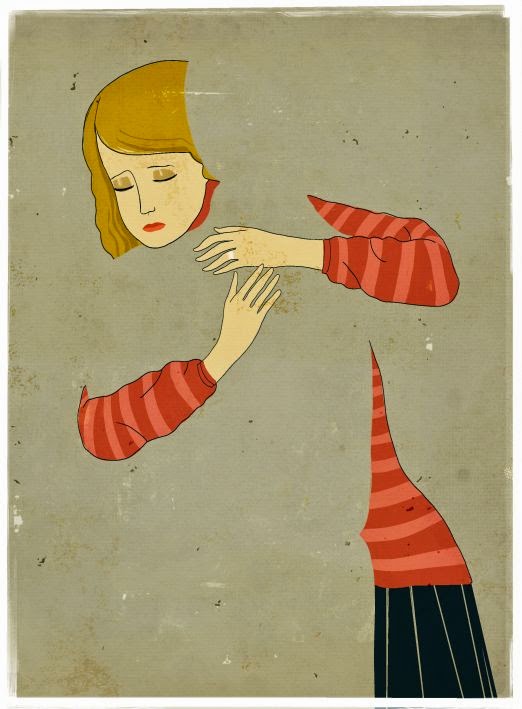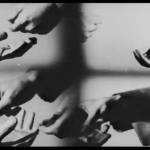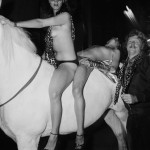PARTICIPANTS:
Nicolas, Sofia, Brendan, Nicolas, Christian, Sana, Arianna, Esteban, Thiago, Agnes, Juan, Seba, Anouk, Luiza, Pierre, Robin, Yaari, Aela, Lili, Lilia
P > Q > R
1) Sofia > Nicolas > Christian
2) Brendan > Aela > Agnes
3) Nicolas > Luiza > Juan
4) Christian > Varinia > Sofia
5) Sana > Lili > Lilia
6) Arianna > Brendan > Varinia
7) Esteban > Yaari > Aela
8) Thiago > Pierre > Arianna
9) Agnes > Lilia > Luiza
10) Juan > Arianna > Lili
11) Seba > Sana > Nicolas
12) Anouk > Christian > Pierre
13) Luiza > Juan > Anouk
14) Pierre > Esteban > Seba
15) Robin > Anouk > Thiago
16) Yaari > Thiago > Sana
17) Aela > Sofia > Yaari
18) Lili > Agnes > Robin
19) Lilia > Seba > Esteban
20) Varinia > Robin > Brendan
QUESTIONS:
1) Sofia > Nicolas > Christian
Dear Sofia
following the advise of Juan, I’ll keep myself short this time.
Your teeth - and what they were reacting on - reminded me of these sentences of a Danish guy:
... What a piece of work is a man! how noble in reason!
how infinite in faculty! in form and moving how
express and admirable! in action how like an angel!
in apprehension how like a god! the beauty of the
world! the paragon of animals! And yet, to me,
what is this quintessence of dust? ...
2) Brendan > Aela > Agnes
Those black dots made me think about the blind point of our vision: the point located at the exact center of our iris ! Paradoxically, without this blind point we could not see: it is the void of the wheel's hub that makes it roll !!!
"At the extremes, there is freedom" sounds like the peaceful promise, the quiet answer to an unresolvable question...what is behind?...what is after ?...nothing...something else ?
Here is my question: are we breathing ?
3) Nicolas > Luiza > Juan
Nicolas,
During you performance I kept thinking on mobility. First, because it regulated the order of our presentations, since you could not move. Then, because later you could move, and did so the entire night with that boxed-hand, and, finally, because of the short exchange we had where you said that it was funny because you could actually move your index finger around - even if we could not see, or if you couldn't move any other part of your hand.
And then, this image came to my mind, in a maybe oppose process of thinking...
And then I thought on the polyp. growing and taking space and on the confetti spreading and taking space, but both in very different manners, specially in relation to the air around them and, thus, my question is: How do you feel is your way of taking space as you move?
Juan, I really liked you idea of using image, and so feel free to respond directly to it as well :))
4) Christian > Varinia > Sofia
Christian, in your proposition i saw that the silence generated by the impossibility to talk in a fight between 2 people, has a soothing effect on bodies, as if making them somehow docile and devoted to their condition. I was not sure if this condition bind the bodies closer together or just kept them at an unchangeable distance to each other. But i believe to see that this condition doesn't distance the bodies further away from each other. Do you think that this proximity of bodies is created by silence alone or by the impossibility to talk? For instance, how close do you feel to the other bodies while reading a book in a library?
5) Sana > Lili > Lilia
*a cut and a stitch* - both operating on a membrane, both using similar instruments, the act is distinguishing them however from each other;
both small, but insistent
after a while I lose track of which one is destructive and which one is mending in its intention
disruption, destruction turns into a call for change, while the caring sewing becomes the imprisonment
I find it interesting that a stitch can also mean a twinge, a spasm, a sharp pain in the body
my question:
How is/can care be an act of violence?
6) Arianna > Brendan > Varinia
Before becoming the careful breathing pile:
There was a circle drawn on the ground. Where was it that we went when we crossed over the divide from the outside of the circle to the inside. Where did we go ? (And maybe, are there things we could or should do to prepare ourselves for the journey across this divide?)
7) Esteban > Yaari > Aela
ok: the night before the session i was reading Ovid's Metamorphosis (!), in Hebrew, and copied to myself the exact same sentence(!#2) that begins it all:
“I intend to speak of forms changed into new entities".
the Hebrew translation though, says something like: "my soul (/psyche) is forcing me to speak of bodies that changed into new forms".
the differences are a great land of thinking: first in the intention - it shifts the "i" to a place which is a channel, a body or a vessel - a medium which forced by an inner movement to an action, then comes the shift from body->new form, in compere to form->new entity.
in relates to readiness, or to metamorphosis , which thought these differences enable?
8) Thiago > Pierre > Arianna
Dear Thiago,
You introduced in your text a highly interesting matter for me : the octopus intelligence.
I'll let you know asap the content of my research on the subject but I will focus today on your desire and practice of imitating animals.
Gabriel Tarde offers two concepts to explain social movements: imitation and invention. Everyone imitates what s-he admires, what s-he sees as good and able to serve as a model, but arranges by mixing, in an original way, the selected imitations to their plural sources. Thus, history is as a succession of different imitative flows, a succession of models able to give rise to imitations by a large number of individuals. Why imitation? Because Tarde conceives individuals as a large ensemble of reflections; that is to say that everyone sees her/his fellows and in them finds her/himself. It is a game of mirrors that stands at the heart of living-in-society. Constantly, we judge and we are judged, ourselves facing the others and the others facing us. Each one of us comes naturally to doing-like-the-other, so that she/he will recognize her/himself in us and vice versa, for that life-in-society, after all, substantialises consistently and possibly becomes shared common points and not opposed dissimilarities – a set of relationships where even the tendency to opposition becomes common: ‘Two opposite, inverse, contrary things, have, as their singular character, to actualise a difference in their similarity which consists in its very difference, or, if one prefers, to present a resemblance which is to differ as much as possible’ (in L'opposition universelle : essai d'une théorie des contraires, 1897). One can understand Bruno Latour when he identifies Tarde as a precursor of actor-network-theory: one link in an unbroken social chain, the individual finds its place in society through the influential relationships she/he weaves with her/his peers. The basis of imitation and invention, which is a series of acts and processes, is identified by Tarde as belief and desire, which are individual psychological characteristics. "Belief and desire: so this is the substance and the strength, these are the two psychological quantities that analysis found underneath all the sensational qualities with which they combine; and when invention and then imitation, seize them to organize and use them, these are the real social quantities "(in Les lois de l'imitation (1890).
Thus my question is : who do you think you will become by regularly imitating animals and which kind of effect this desire can have on society?
my best,
Pierre
9) Agnes > Lilia > Luiza
When I was reading your text I kept thinking about multiplying, adding, subtracting the numbers 1 and 2… So that one could become two or three or zero, or… So that choice is not binary but a multiple or a fraction, a derivate, of the given… I think that was maybe what was happening in the way you performed the text with the lines crossing each other, creating cross road options … maybe this is the desire for freedom, which at the end does not depend on the choice you take but how you deal with the future of those choices. Sometimes I think choice does not exist.
I was looking for a poem because some poetry is a relief… I wanted to connect to notions of ambiguity and uncertainty and the number three. I found this one by Wislawa Szymborska, which I didn’t know before.
The Three Oddest Words
When I pronounce the word Future,
the first syllable already belongs to the past.
When I pronounce the word Silence,
I destroy it.
When I pronounce the word Nothing,
I make something no non-being can hold.
The question is: what happens when I pronounce the word escape?
10) Juan > Arianna > Lili
It's funny to see the links between all this.
I'm very much inspired by the text that you proposed right before your action, Juan.
It talks about a space that it is not accountable through reason.
This resistance of space to reason (and reasonability) is not an act of antiphaty of the former towards the latter.
It's just the gentle and wise refusal to hastily follow the seemengly crystalline, transparent, univocal path of logic.
Space: "No, thank you. I need to take my time".
The labyrinth (the Sensory Space, the Hole) is what requires more than one sense to be used when traversing it.
More than one intention when entered, more than one quality of strength when confronted.
It is a space of the multiple and ambiguous – a space of the resonance more than one of the echo.
It needs intuition, generosity, and a bit of blindness when approached.
The word labyrinth itself resonated in me when I read the text again, because of the name I carry.
Ariadne is the one who knows how to handle the threads, and she knows not by intellect, but by intuition. She doesn't hold on her knowledge, but offers it almost blindly because she fell in love.
This generous act leads her, varying according to the different accounts, either to a solitary death on an isle or to the marriage with the god of Disorder, Ambiguity, Ecstasy and Madness – Dyonisus. Which I personally find two very similar outcomes of the story.
Coming back to the text.. and connecting it to the action you did.
I wonder if my name spoke trough me. If the potential that a word can carry expressed itself through the vessel of the body – through the fleshy materiality of it. Like a sound can pass through and resonate differently according to the material that traverses.
So, I am not speaking language. Language speaks me.
It's not (or not only) an act of the intellect anymore. It is an event of the entire flesh we are made of.
It makes me move, and articulate my full(s) and my void(s).
The mouth, with its full and empty spaces, is the cavity-cave of language; the Hole, the Sensory Space.
The jaw is its instrument and rudder, which then transmits its inputs to and through the passages of the body.
What if we were beings fully conducted by the mouth and the jaw?
What if the apparatus mouth/jaw would be our leading organ?
11) Seba -Sana -Nicolas
I really enjoyed reading the lines , they were silent lines on the black background like the waving breaths in the darkness( as you described).
It was joyful to dive into images you created by those pictorial, imaginary and alive fragments.
I am impressed how you gradually turn detachment to connection, alienation to relation and factuality to fluidity through the rhythm of breaths. When we try to synchronize our breaths we become more aware of our presence. Thus the breaths speak and the skins understand.
At the same time the notion of location is inserted. Therefore, we are invited to a traversal spatiality.
The body could become an in-between space when it’s location is wrapped in it’s imagination. What is the actual location then transformed to?
12) Anouk > Christian > Pierre
Dear Anouk,
one of the sentences you quoted from your (unnamed) friend was this: "The skin is an extended layer of the brain and the brain is an extended layer of the skin". Do you think that means that discourse and material are inseparable because our bodies contains, and can not exist without, both? If yes it's just yes, but if no; does material without any form of discourse exist?
You continued to explain, as you moved around to sense the space towards the ceiling and the floor, what it means to your practice to pay attention to your own self and the materials you were touching. It is important for you (and us, I think) to actively seek out physical knowledge and not take materials for granted just because they happen to all around us.
What are you made of, and where does the energy that makes you move come from?
13) Luiza > Juan > Anouk
Dears
So Luiza coincidentally your drawing session with Arianna was base on my poetic text !
Stroke me a lot how accurate are the dynamics of the drawings related to the word ABYSMAL, they are so near to my images when I wrote the text.
My question will try to dig in Arianna’s question about ABYSMAL seen through the vector - dot drawings of Luiza.
My question is a photograph I took couple of years ago at the Museum of anthropology in Mexico City; the image depicts a terracotta Aztec warrior wearing as a mask the face of a defeater warrior at war which is been totally peel off.
Key words…
- Personification of the soul of the other
- Appropriation of the image of the other
- Cultural anthropophage

14) Pierre > Esteban > Seba
Dear Pierre
Thinking about the journey that you proposed to us on Wednesday, I am surrounded by questions about temporality and subjectivity.
Since we are functioning as mediums, we are called to become a vessel for the presence of the ghost. However, we are not only transmitting the ghost’s ‘message’, but actually, our recollection-impregnation-imagination of its presence.
Furthermore, we are asked to substantiate its presence in the objects, and to
create a new collective presence through their relationality. This new life of the ghost will be solidified in a photograph.
How do you see our function of vessels and at the same time translators of
a fleeting presence? How do we impregnate and singularize our transmissions with ourselves while maintaining our collective function of opening up the past-future? Do we also become ghosts in the sense of loosing our regular contours?
15) Robin > Anouk > Thiago
Dear Robin,
I remember/ imagine, the cracks, the space between the ice blocks, the sharp interruption of the film by some kind of lightning. Is the short-circuit (court-circuit) an important tool in your work and why ?
16) Yaari > Thiago > Sana
Yaari, your language reminds me a lot of Manoel de Barros, one of the greatest Brazilian poets. Not only because of his interest in forests and nature, but because he used to subvert the usual logics of written language, as you do. I see in both of you the interest of finding in nature the metaphors for the exhaustion of language. To write becomes to meet nature.
The Rock
Being a rock
I have the pleasure of lying on the ground.
I only deprive lizards and butterflies.
Certain shells take shelter in me.
Mosses grow from my interstices.
Birds use me to sharpen their beaks.
Sometimes a heron occupies me all day.
I feel praised.
There are other privileges to being a rock:
a—I irritate the silence of insects,
b—I am the beat of moonlight in solitude,
c—In the mornings I bathe in dew.
d—And the sun compliments me first.
my questions:
how to practice the forest in the city ? would it be possible without writing?
17) Aela > Sofia > Yaari
Dear Aela,
In the end of the scene, the main protagonist, who runs the village and in this scene takes up the role of a sort of choreographer/director (who performs a similar role to the one you did) says something like: "but It's not over" as indicating that we are still moving according to that eternal and immortal choreography. To him, that dance is a model that represents the movements of the solar system but it also has a metaphorical function in the film: it's an element of transmutation that allows the character's bodies to connect to immortality and to the universe. In your waltz you made references to what I understand as eroticism when describing the movements between our bodies, our relationship to space and music. The dance was a way for us to connect with the cosmos and the erotic connection between us. You made us to dance alone, holding our arms in mid air as if someone was there, but all at the same time and rhythm. What is the importance of the distance you made us keep between us?
18) Lili > Agnes > Robin
When I recall the image of your performance it has a strong physical impact on me. I have to think about poetic sadism or sadistic poetry……and wonder: what is a long-distance touch and what could it stimulate?
19) Lilia > Sébastien > Esteban
Dear Esteban,
I have two questions about love, inspired by Lilia's triple-couple-performance. You can pick the one you like best!
1. Metaphor, George Lakof and Mark Johnson explain in Metaphors We Live By, is a fundamental mechanism of mind, one that allows us to use what we know about our physical and social experience to provide understanding of countless other subjects. Because such metaphors structure our most basic understandings of our experience, they are "metaphors we live by"—metaphors that can shape our perceptions and actions without our ever noticing them. Of all the metaphors for love you can find via the following link (or anywhere), very few refer to long term, complex but fruitful relationships. What would be a good metaphor to describe those kinds of relationships, and why? http://grammar.about.com/od/rhetoricstyle/a/lovemetaphors_3.htm
2. What is the relation between love and mourning? I am not referring to the mourning process following the death of a loved one, but to the role of mourning within a love relationship.
Sébastien
20) Varinia>Robin>Brendan
Dear Varinia
What touched me most in your performance was the way, at the end, you came towards us and made this kind of hesitant ambiguous gesture to the right and left - It felt like a mix between a potential indication of direction or a receiving of something, but it was the vulnerability of the gesture which I found interesting.. (unlike the one below which I include as a visual reference but not a very exact one, sorry)

So the Question is “What’s the importance of vulnerability in your research?
Definition of vulnerability from the Red Cross:
Vulnerability can be defined as the diminished capacity of an individual or group to anticipate, cope with, resist and recover from the impact of a natural or man-made hazard. The concept is relative and dynamic. Vulnerability is most often associated with poverty, but it can also arise when people are isolated, insecure and defenceless in the face of risk, shock or stress.
People differ in their exposure to risk as a result of their social group, gender, ethnic or other identity, age and other factors. Vulnerability may also vary in its forms: poverty, for example, may mean that housing is unable to withstand an earthquake or a hurricane, or lack of preparedness may result in a slower response to a disaster, leading to greater loss of life or prolonged suffering.
The reverse side of the coin is capacity, which can be described as the resources available to individuals, households and communities to cope with a threat or to resist the impact of a hazard. Such resources can be physical or material, but they can also be found in the way a community is organized or in the skills or attributes of individuals and/or organizations in the community.
To determine people’s vulnerability, two questions need to be asked:
• to what threat or hazard are they vulnerable?
• what makes them vulnerable to that threat or hazard?
Counteracting vulnerability requires:
• reducing the impact of the hazard itself where possible (through mitigation, prediction and warning, preparedness);
• building capacities to withstand and cope with hazards;
• tackling the root causes of vulnerability, such as poverty, poor governance, discrimination, inequality and inadequate access to resources and livelihoods.
REPLIES:
2) Brendan > Aela > Agnes
revitalise your personal blind spot
- find your blind spot
- when your blind spot dissappeared give him new life with a color of your choice
- whisper something nice to your blind spot
- place your blind spot somewhere in the space

7) esteban > Yaahri > Aela
“I I I I.... inteeeeeeennnnnd to sp...sp...speak of fffff...forms cccchhhhh...changed intoooooo neeeeeew entities” / "myyyyy sooooooul is ffff...ff...forciiiing meeeee to sp...sp...sp...speak offff bo...o..dies that ch...ch...changed intoooo neeeeew ffff...f...fforms”
8) Thiago > Pierre > Arianna

Hoarding
or
caching
in animal behavior
is the storage of food in locations hidden from the sight of both
conspecifics (animals of the same or closely related species) and
members of other species.
Most commonly,
the function of hoarding or caching is to store food in times of
surplus for times when food is less plentiful.
However,
there is evidence that some amount of caching or hoarding is done
in order to ripen the food, called
ripening caching.
The term hoarding is most typically used for rodents,
whereas caching is more commonly used in reference to birds,
but the behaviors in both animal groups are quite similar.
Hoarding is done either on
a long-term basis
or on a short term basis,
in which case the food will be consumed over a period of one
or several days.
There are two types of caching behavior:
larder-hoarding, where a species creates a few large caches which
it often defends,
and scatter-hoarding, where a species will create multiple caches,
often with
each individual food item
stored in a unique place.
Both types of caching have
their advantage.
Most species are particularly wary of onlooking individuals during
caching and ensure
that the cache locations
are secret.
Not all caches are
concealed however,
for example shrikes store
prey items on thorns on branches in the open.
Although a small handful of species share food stores,
food hoarding is a solo
endeavor for most species, including almost all rodents
and birds.
They hoard their food supply selfishly, caching and retrieving the
supply in secret.
(from the definition of "Hoarding (animal behavior)", Wikipedia)
13) Luiza > Juan > Anouk

I am using a score from Anna Halprin, an American dance artist to describe this image to answer Juan’s question. The score is: I see,I feel, I imagine. I like the use of I, the subjective point of view and that the verbs, to see, to feel and to imagine are touching three layers of awareness: the body layer, the emotional layer and the mental layer that is imagination.
I see a sculpture made of terra cotta. I see a head, a terra cotta head, a bold head. I see the head of a baby. I see only one ear, a broken ear. I imagine that the ear lobe was very long before it broke. I imagine that it can break. I see that it is fragile. I imagine it is fragile. I see some shadows. I see holes. I see that the holes have different shapes. I see a big open hole; two small ones next to each other and two other almonds shape ones that are not placed symmetrically. I see a mouth, two nostrils, two orbits. I see there is no eye in the orbits. I see that the holes are not deep. I see another mouth in the mouse and one other orbit in the right orbit. I see a mask covering a face. I imagine someone else face behind the mask. I feel intrigued. I feel that I want to see that face behind. I feel that I want to uncover that face. I feel that I will find another layer behind this layer and another one and another, an infinity of layers. I imagine layers and layers and layers of faces on top of each other. I imagine myself falling into the hole, falling through the mouth. I imagine myself shouting while I fall. I imagine diving into layers of generation. I see that the mouth of that face that I imagine behind the mask is slightly open. I see the teeth of this person. I imagine it is a man. I imagine he is cruel. I imagine he is older. I imagine he is tense. I imagine that he want to appear younger by wearing this mask. I imagine plastic surgery. I see an expression that has been frozen. I imagine death. I imagine that the mask is shouting. I imagine he is shouting because he is in pain. I imagine it is the moment of his death. I imagine it is the moment of its birth. I imagine a rebirth. I imagine his first shout. I imagine the sound of it. I feel mesmerized and terrified. I feel goose bump on my skin. I feel tension in my guts. I imagine this child is my child. I remember his two eyes looking at me from below in the water.
I see the irregularity of the terra cotta. I imagine myself making this mask with my hand. I imagine myself touching the surface. I feel touched by this material. I feel inclined to touch it. I imagine myself making this mask. I imagine the sound of the humid clay while I mold it. I imagine the dance of my hand adapting to the material. I imagine that the clay is molding me. I imagine wearing the mask. I imagine I would be someone else then. I imagine the mask as some power. I imagine that if I wear this mask, I will make a trip back in time. I imagine I will revisit ancient memories. I imagine myself diving into the abyss of my memories. I imagine reliving my ancestors, my previous incarnation. I feel scares of becoming the cruel man if I wear it. I feel the sensation of the mask on my face. I feel it is cold. I feel that it does not fit. I imagine myself moving the sculpture to see it from another angle. I see the point of view of the photographer that took the picture. I see blue grey background. I imagine that the camera is Iike a mask. I imagine it is another layer in front of the face of the photographer. I imagine the photography as a mask, as a layer that covers something else. I imagine the photography of the photography of the photography. I imagine a “ mise en abyme”. I feel myself looking for what is behind. I feel myself wandering if there is anything behind. I feel myself wandering if there is anything at all.
20) Varinia>Robin>Brendan
So what I would say is that, in a way, there is nothing to see,
nothing really, there’s nothing to really see, if you are looking at it, as you do.
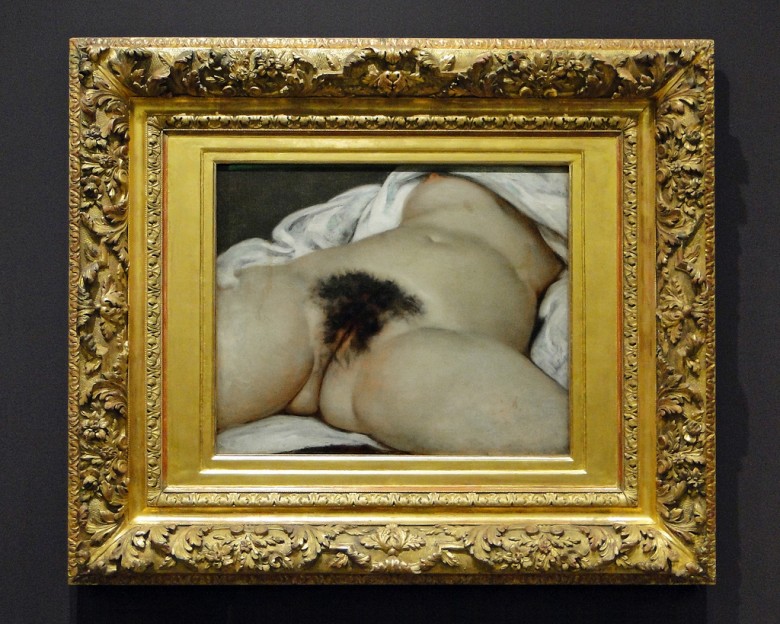
“Look there’s nothing to see. Look what you see is so real.
Look, if you don’t look you’ll make your own expectations,
you’ll make your own desire.”
“It is as if I opened my shirt, my shirt at the door of my bedroom, saying leave me alone,”
(silence accompanied by time)
(taking position in the recline)
“You bastard looking at me crying. I won’t give you a tear.”
“I won’t give you a single tear.”
“you watch the painting”
“and I don’t believe you, you mock- this illusion”.
Illusion.
“There is nothing to see, pass your way,”
“ l’indécence du regard, est de plus en plus morne.
Tout cela, à beaucoup entre vous donne les cornes”
The indecent look becomes increasingly more and more bleak.
All this gives you a lot between the horns-
“and you will never say hi to puberty the same way again.”
“L’ indecence a voir avec la mort des larmes”
Indecency even with the death of tears.
(sounding and speaking more gentle)
“And I tried, I tried, I tried-
to say that things can be hidden. Not for the good but for the highest level.
I know that I didn’t do so many things at the end. But I still think I did too much.
I have the time to think, I have the time to discover, I have the time to touch, I have the time to untouch, I have the time to detach, I have the time to”-
“where as polite or not-
and grey in the silk ground
of flower bond
b-o-n-d.
for thinkers shouldn’t be so much. (so many)
they are confusing the whole(hole)-
structure."
18) Lili > Agnes > Robin
what is a long-distance touch and what could it stimulate?
Light-Touch
“It is possible that we are rare, fleeting specks of awareness in an unfeeling cosmic desert, the only witnesses to its wonder.
It is also possible that we are living in a universal sea of sentience, surrounded by ecstasy and strife that is open to our influence.
Timo Hannay, publisher
the term light sometimes refers to electromagnetic radiation of any wavelength, whether visible or not.[4][5] In this sense, gamma rays, X-rays, microwaves and radio waves are also light.
Like all types of light, visible light is emitted and absorbed in tiny "packets" called photons and exhibits properties of both waves and particles. This property is referred to as the wave–particle duality.
https://en.wikipedia.org/wiki/Light
We are dead stars looking back up at the sky, the Iron in our blood and all the elements that make up our bodies were created in a Supernova explosion.
As Humans we tend to think of the stars as eternal, but the stars will all burn out someday, there's only a certain amount of stellar fuel- Hydrogen, and the Stars are burning through it, and the stars, as we know them will all eventually die out, (in some trillions of years), and the universe will be dark for the rest of time.
We're actually living in a potential Eden right now, in a time when this 10 billion year live thing 'the sun' is pouring down free energy, we are using it , we are evolving, we are becoming sentient beings who are able to look back out at the universe from where they came.
Starlight will only be there for the shortest span of the universe's history and then everything else will be dark, someday I wonder if people will have myths about the days when stars rained down free energy and sunlight on the planet."
Nasa Astronomer Dr. Michelle Thaller.
http://www.boreme.com/posting.php?id=40047#.Vq-PNUtnGDU
Hang on this connection is breaking up
You are only coming through in waves
Your lips move but I can't hear what you're saying
When I was a child
I caught a fleeting glimpse
Out of the corner of my eye
I turned to look, but it was gone
I cannot put my finger on it now
David Bowie/comfortably numb
physicists brought light to a "complete standstill" by passing it through a Bose–Einstein condensate of the element rubidium.
The popular description of light being "stopped" in experiments refers only to light being stored in the excited states of atoms. During the time it had "stopped" it had ceased to be light.
https://en.wikipedia.org/wiki/Light
Touch: embrace, lick, palpation, stroke, feel,
Touch:pat, fondle, hit, tactility, touching,
Touch: petting, push, caress, taste, kiss, rub, taction,
Touch: stroking, scratching, hug, blow, grope, feel , peck
Touch: to put the hand, finger, etc., on or into contact with (something) to feel it:
nce.com/browse/touch
Touch: one of the five senses along with taste, smell, hearing and seeing, is defined as the act you do when you hold, caress, feel or otherwise encounter something with your hand.
Touch: to lay the hand on (a person with scrofula), as some kings once did, to effect a cure
Touch: to arouse an emotion in, esp. one of sympathy, gratitude, etc
http://www.yourdictionary.com/touch#JSV8WyareZKbTFwD.99
Touch/ Somatosensory System: Pain receptors: nocireceptor. "Noci-" in Latin means "injurious" or "hurt”. these receptors detect pain or stimuli that can or does cause damage to the skin and other tissues of the body, tissues of the body.
Touch: There are over three million pain receptors throughout the body, found in skin, muscles, bones, blood vessels, and some organs.
Touch: Pain receptors can detect pain that is caused by mechanical stimuli, like cutting into the surface of the skin with a knife, thermal stimuli, like burning the layers of your body with a blow torch, chemical stimuli - like swallowing a poison and emotional stimuli, like having your heart pierced by another.
RobinAmanda
Touch: When you were born, oxytocin helped expel you from your mother’s womb and made it possible for her to nurse you..As a small child, you enjoyed your mother’s and father’s loving touch because it released oxytocin in your body
https://www.psychologytoday.com/blog/the-mind-body-connection/201309/why-we-all-need-touch-and-be-touched
Touch: sensory neurons are triggered by specific stimulus such as pain, for instance. This signal then passes to the part of the brain attributed to that area on the body—this allows the stimulus to be felt at the correct location.
https://en.wikipedia.org/wiki/Somatosensory_system
Sound bed for text: Soy el punto negro que anda.m4a.download
KEYWORDS: goo, internal communication, sensible mass, timing, two, materiality, skin, Imagination, flux, fusion, bite,
REPORT: It's exiting, we are getting somewhere different from where we had started. Starting next Wednesday we will be cooking for each other. We are asking questions to each other that we would never be asking otherwise, pulling potentialities out of each others proposals. We are stepping out of what we knew, of what we felt was our own interest. Isn't it exiting when suddenly we find ourselves liking things we would never have expected to like before? Isn't it surprising to be all of the sudden disliking things you would've thought you already loved? Yes, I feel it changing, it's coming, we're are stepping into something beautifully complex! Oh, it's exiting, we are stepping into strange fields! Oh, so exiting, these dangerous fields that soon we might call common ground!





